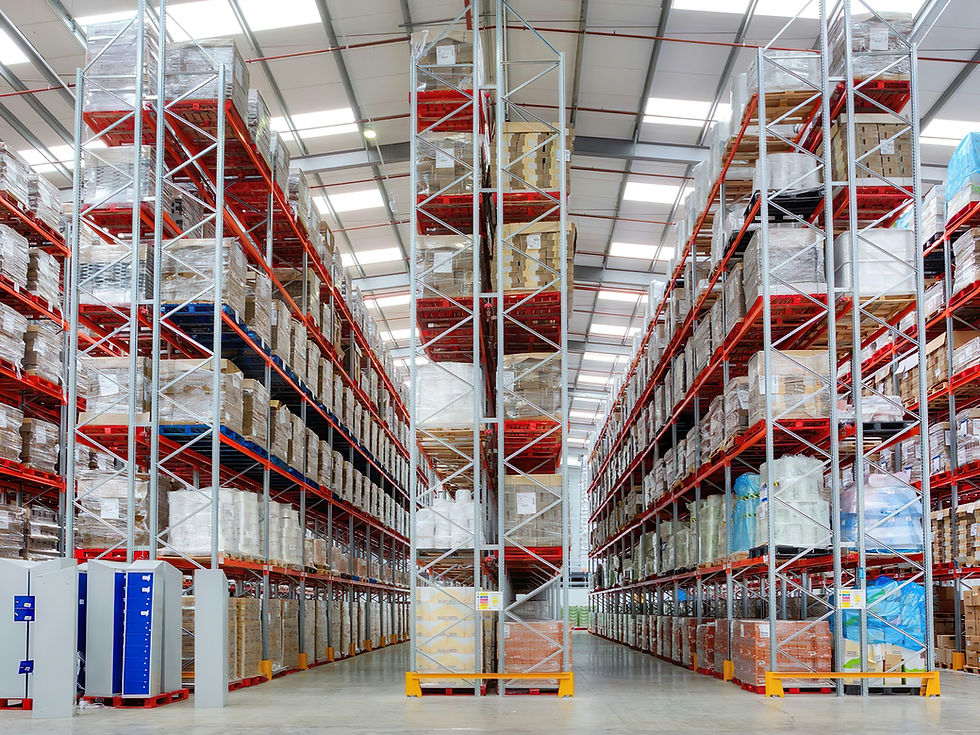Correct Storage Organization in Production
- 77 Teknik

- Sep 22
- 5 min read

Optimizing Facility Design for Workflow, Safety, and Efficiency
In modern manufacturing, storage is not just about stacking materials, it is a critical factor in facility design and production efficiency. Poorly organized storage can create bottlenecks, increase handling time, and lead to safety hazards. On the other hand, a well planned storage system ensures smooth operations, better space utilization, and enhanced workplace safety.
At 77 Teknik, we recognize that correct storage organization in production is an integral part of lean facility design and global manufacturing competitiveness.
Why Storage Organization Matters in Production
An unstructured storage area directly affects production flow:
1. Material Delays – Reducing Search Time for Tools, Parts, and Materials
Explanation: In a disorganized storage area, workers spend excessive time searching for tools, parts, or raw materials. This inefficiency disrupts production schedules and reduces overall productivity. For example, if a manufacturing operator needs a specific component but it’s buried in an unsorted pile or stored in an unmarked location, the time spent searching delays the production process.
Impact: These delays can compound across a production line, leading to missed deadlines, reduced output, and frustrated employees. In lean manufacturing, where time is a critical resource, even small delays can have significant downstream effects.
Solution: Implementing systems like 5S (Sort, Set in order, Shine, Standardize, Sustain) or Kanban ensures that materials are clearly labeled, logically arranged, and easily accessible. For instance, using color coded bins or dedicated tool boards with outlines for each tool (shadow boards) allows workers to quickly locate what they need.
Example: In an automotive assembly plant, a well organized storage system with labeled racks for parts like bolts, gaskets, and sensors can reduce retrieval time from minutes to seconds, keeping the assembly line moving smoothly.
2. Safety Risks – Mitigating Workplace Accidents
Explanation: Poorly organized storage areas create safety hazards. For example, items stacked haphazardly on shelves can fall, heavy materials stored at improper heights can cause injuries during retrieval, and cluttered walkways can lead to trips or falls. Additionally, misplaced hazardous materials (e.g., chemicals) can pose risks if not stored according to safety regulations.
Impact: Workplace accidents not only endanger employees but also lead to downtime, medical costs, and potential legal liabilities. A single accident caused by disorganized storage can halt production for hours or even days.
Solution: Proper storage organization includes adhering to safety standards, such as storing heavy items on lower shelves, securing tall stacks, and maintaining clear, unobstructed pathways. Regular audits and safety training reinforce these practices.
Example: In a warehouse, using pallet racking systems with weight limits clearly marked and ensuring flammable materials are stored in designated fireproof cabinets can prevent accidents and comply with OSHA regulations.
3. Excessive Costs – Minimizing Waste and Inefficiency
Explanation: Disorganized storage often leads to misplaced or lost inventory, forcing companies to reorder materials unnecessarily. Overstocking due to poor visibility of existing inventory ties up capital, while understocking due to miscounts or misplacement causes production delays. Additionally, damaged goods from improper storage (e.g., corrosion, breakage) add to costs.
Impact: These inefficiencies inflate operational costs and erode profit margins. For instance, reordering a part that’s already in stock but untraceable wastes both money and time.
Solution: Implementing inventory management systems, such as barcode or RFID tracking, ensures accurate stock levels and locations. Regular cycle counts and first-in, first-out (FIFO) practices prevent spoilage or obsolescence of materials.
Example: A food processing plant that uses FIFO shelving for perishable ingredients can avoid spoilage losses, while a digital inventory system can alert managers when stock is low, preventing over ordering.
4. Workflow Interruptions – Supporting Lean Operations
Explanation: Lean manufacturing relies on smooth, uninterrupted workflows to maximize efficiency. Inconsistent storage practices, such as varying storage locations or unclear labeling, disrupt this flow by creating bottlenecks. For example, if a worker has to stop production to locate a missing tool or wait for a misrouted material delivery, the entire process slows down.
Impact: These interruptions undermine the principles of lean operations, such as just in time (JIT) production, where materials must be available precisely when needed. This can lead to idle workers, delayed shipments, and dissatisfied customers.
Solution: Standardizing storage procedures, such as assigning fixed locations for each item and using visual management tools (e.g., floor markings, signage), ensures consistency. Automated systems like conveyor belts or automated storage and retrieval systems (ASRS) can further streamline material flow.
Example: In a JIT manufacturing facility producing electronics, a well organized storage system with automated retrieval ensures components like circuit boards are delivered to the assembly line exactly when needed, minimizing downtime.
5. Ensuring the Right Material, Right Place, Right Time
Explanation: The ultimate goal of storage organization is to align with the production schedule so that materials, tools, and parts are available exactly where and when they’re needed. This principle supports both efficiency and quality, as workers can focus on their tasks without worrying about sourcing materials.
Impact: Proper storage organization enhances overall production reliability, reduces lead times, and improves customer satisfaction by ensuring timely delivery of high quality products.
Solution: A combination of physical organization (e.g., modular shelving, labeled bins) and digital tools (e.g., warehouse management systems) creates a seamless flow of materials. Regular training and process audits ensure that the system remains effective.
Example: In a pharmaceutical manufacturing plant, precise storage of raw materials in climate controlled, labeled containers ensures that production runs smoothly and meets strict regulatory standards.
Correct storage organization ensures that the right material is available, in the right place, at the right time.
Key Principles of Correct Storage Organization
Facility Layout Integration
Storage must align with the production flow , from raw material input to finished goods.
Categorization & Standardization
Tools, raw materials, and parts should be labeled, standardized, and stored systematically.
Accessibility & Safety
Frequently used materials should be placed within ergonomic reach, while heavy or hazardous items require special handling zones.
Space Optimization
Use vertical storage, modular racks, and automated retrieval systems to maximize available space.
Digital Integration
Apply ERP or IoT based inventory systems for real time visibility of stock levels and locations.
Benefits of Correct Storage Organization
Reduced Waste & Costs – Less reordering, scrap, and misplaced inventory
Faster Production Flow – Materials are always available at the point of need
Higher Workplace Safety – Organized layouts minimize accidents and risks
Improved Efficiency – Lean production principles supported by structured storage
Scalability – Storage systems designed for future production growth
77 Teknik’s Approach to Storage in Facility
At 77 Teknik, we use storage systems as a strategic element of facility:
Lean Aligned Storage – Direct connection between workstations and material supply.
Modular Racking Systems – Flexible layouts that adapt to different production volumes.
Digital Inventory Tracking – ERP based material flow monitoring for real time control.
Safety & Compliance – Storage solutions that meet international safety and handling standards.
Smart Logistics Integration – Seamless flow from storage areas to CNC machining, welding, and assembly lines.
Organized Storage = Efficient Production
Correct storage organization is not an afterthough, it is a core part of production facility design. By aligning storage with workflows, integrating digital tracking, and focusing on safety, manufacturers can achieve higher efficiency, lower costs, and improved resilience.



